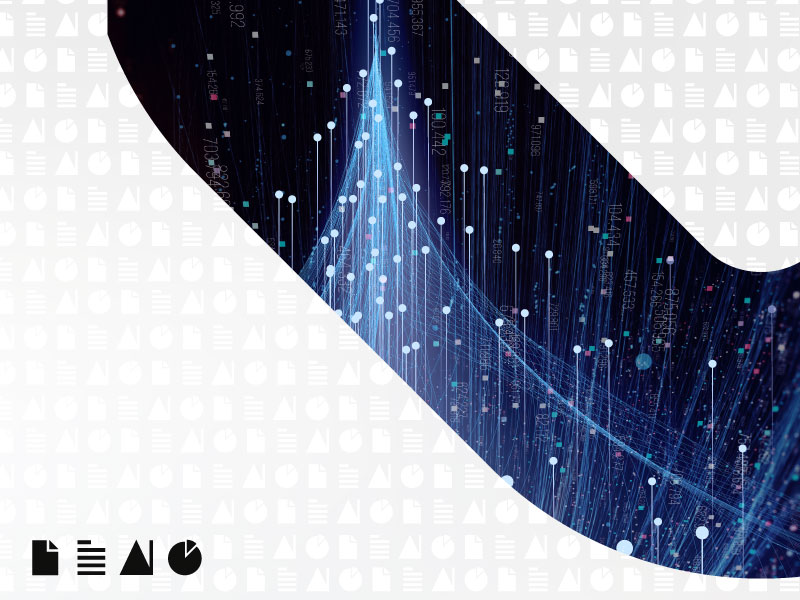Home > XtractEdge > Blogs > Evaluating the importance of data digitization for end-to-end process automation
Evaluating the importance of data digitization for end-to-end process automation

Past responses to crises have created a significant shift from low-cost labor to higher-value work. Businesses have realized that nothing short of digitization can secure anti-fragility in the present. Besides having a digital workforce for resilience and survival, companies also need data digitization. Recently, new advancements have been made in the field of data science and technology to ensure an intelligent approach to capturing granular insights with the help of Robotic Process Automation (RPA) and Intelligent Automation (IA) to uncover patterns and disparities existing within the organization.
What is data digitization?
According to SME Robert Garagiola, Senior Director for Global Enterprise Data, enterprise data is stored and organized within proper repositories, databases, data marts, lakes, and warehouses. However, some information is available, unstructured, and scattered, across multiple digital formats, like emails and pdfs. Unstructured data, including images, handwriting, signatures, and mobile content, pose a challenge to capturing and digitizing data. And many data are found in non-digital paper-based documents.
Data digitization is the process of converting company information and documents from analog to digital, making data easily accessible and consumable by humans and machines alike.
There is a gap existing between what you believe to be data digitization and what it actually is. For instance, information present in PDFs is digitized data but not in a consumable format at a point in time when you need to make crucial decisions. So, information hidden inside videos, documents, emails, pdfs, and spreadsheets flowing about everywhere for decision-making are examples of unstructured, unconsumable digitized data.
Data digitization offers the following capabilities: Cognitive Machine Reading (CMR) and Machine Learning to classify document data across dozens of languages and lead to end-to-end process automation. Contrarily, Optical Character Recognition (OCR) captures only structured data.
Why is data digitization important?
Automation and AI require fewer resources to offer the following benefits:
In order for businesses to achieve end-to-end process automation, they need analytics-based insights to evolve in today’s markets. But both these technologies thrive in the presence of structured, digitized data.
Sadly, most enterprise data is present in an unstructured and non-digitized format. As per studies, the most significant challenge arises from getting data in a structured, consumable layout when transitioning to intelligent process automation.
Only those areas achieve the highest levels of success when characterized by structured data. The remaining processes involve large quantities of unstructured documents, such as onboarding forms for HR, driver’s licenses for claims, or financial reports for financial spreading.
Data digitization solutions
The main objective of data digitization is to read, recognize, and convert data in an integrated way. As digitized, structured data leads to frictionless downstream processing, using the same Automation can refine downstream activities. Since 81% of respondents in a survey considered end-to-end process integration a top priority for shared services, end-to-end workflows, and data digitization are considered a critical trend.
In order to achieve that, businesses should intelligently leverage AI and associated capabilities like ML and other cognitive solutions to recognize patterns in documents and classify them without any human involvement. Once patterns are identified, Machine Vision and ML models can be trained to extract data. Cognitive Machine Reading (CMR) can also be effectively utilized here. CMR uses pattern-matching via content-based object retrieval methods to digitize a full range of data formats, extract and structure data, apply business rules and enable rapid downstream processing.
In a nutshell, data digitization is the means for businesses to achieve end-to-end process automation and make insightful decision-making. Data is the solid foundation on which an organization can thrive. But, raw data has no value unless it is made consumable for AI and Automation to work on. Hence, it is crucial to understand the distinction between consumable and non-consumable data and whether they are structured and digitized. With the right capabilities and digitization solutions, businesses can solve the problem of data unavailability when and where needed.


Possibilities Unlimited
Possibilities Unlimited
Inspiring enterprises with the power of digital platforms
More blogs from EdgeVerve →